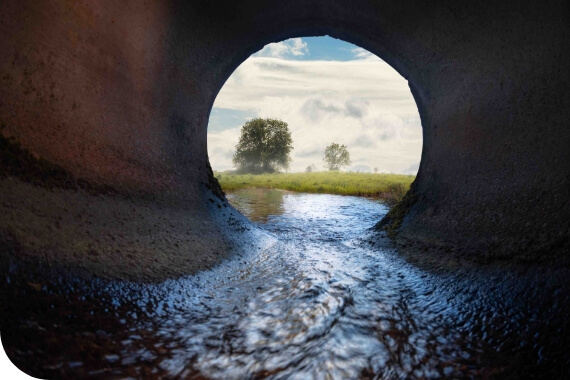Water Stewardship
Water for Headquarter
Shih Wei HQ is located in Taiwan. According to the WRI Aqueduct Tools assessment, the regional water risk is Low to Medium (Medium 1–2). However, due to steep terrain (which limits storage) and the impacts of climate change, Taiwan frequently faces droughts. Effective water resources management helps conserve water, reduce the Company's environmental footprint, and mitigate operational risks.
Office water is 100% supplied by Taiwan Water Corporation; no surface water or groundwater is used. Water is used primarily for employee/visitor drinking, Air Conditioning (AC) systems, and cleaning, resulting in minimal impact on sources. To conserve water, employees are encouraged to set faucets to low-flow; certified vendors regularly clean water dispensers and replace filters. RO drinking water is provided Company-wide to ensure potable water safety, balancing conservation with employee health.
Water for Ships

Water acquisition |
Freshwater is mainly produced onboard: evaporators use waste-heat recovery to distill seawater into freshwater. Most units adopt internal recirculation, so as to resue freshwater by heating and cooling repeatedly.Shortfalls are supplemented by shore-supplied freshwater. |

Water consumption |
Produced freshwater is used for main/auxiliary engine cooling, boiler make-up, washing cargo holds and decks, and for crew domestic and drinking needs. |

Water discharge |
Sewage and oily water are treated and then discharged or landed in accordance with MARPOL 73/78 and area specific rules. Sewage is disinfected/biodegraded prior to discharge; oily water is processed via an oil-water separator. Clean water is discharged to sea where permitted, while residual waste oil is incinerated onboard or delivered to licensed port reception facilities |
Discharge Management of Water Resources
In addition to the discharge regulations of specific countries and regions, ship sewage water is discharged after being disinfected and decomposed by the sewage treatment system in accordance with the regulations stipulated in MARPOL 73/78. Bilge water, on the other hand, is treated by the oil-water separator, and the clean water can be discharged into the ocean. The non-dischargeable oily waste is sent to an incinerator for burning or collected by a professional shore reception equipment provider when the ship is berthed, as prescribed in Annex I of MARPOL 73/78. In addition, the freshwater suppliers are also required to provide healthy and safe water quality report in accordance with the local regulations.

Methods and Handling of Water Stewardship
Due to limited space (mainly for loading) and the high salinity of seawater that cannot be directly used, waste heat recovery drives the freshwater generator to convert seawater into fresh water for crew and equipment use. Most of the ship's equipment adopts an internal circulation mechanism, which effectively utilizes the precious water resources on board by repeatedly using freshwater through heating and cooling.
Waste Heat Recovery
Ships use fuel for propulsion, and the exhaust gas from the main engines, around 400 degrees Celsius, is used to heat the boilers. The steam generated from this process not only preheats viscous fuel but also serves as a heat source in winter. Waste heat recovery helps achieve energy and fuel efficiency.
Additionally, during engine operation, cooling water is used to lower its temperature. The cooling water is heated to about 80 degrees Celsius through heat exchange and then sent to the freshwater generator. Using vacuum technology, the generator distills and cools seawater, producing freshwater.
Water Consumption
There are two sources of freshwater for ships, one from the ocean and is obtained from an evaporator system that uses distillation, and the other is from the shore that is provided by water suppliers. There is no use of surface water, ground water or other water sources. Statistics of the freshwater made by the freshwater maker on the ships are difficult to obtain; therefore, the water consumption of the fleet is based on water intake data on the shore.
100% of the tap water used in the Head Office is from Taiwan Water Corporation. There is no use of surface water, ground water or other water sources. Water is only used by employees and visitors, which has no significant impact on the water sources. Water is mainly used for drinking water, air-conditioning system, cleaning, and so on. Part of the water is for cleaning tableware and the restrooms. To follow the policy of cherishing water resources, our employees are encouraged to adjust water flow to small flow to save water resources. In addition, to protect the health of employees, we commission the manufacturers to test the drinking water quality to ensure the safety and quality of drinking water.
Water Consumption in the past three years
Unit: Megaliter(s)
| Operating activities | Source of water | 2022 | 2023 | 2024 |
|---|---|---|---|---|
| Fleet | Third-party water (shore supply) | 17.497 | 11.353 | 8.255 |
| Seawater (produced freshwater) (3) | N/A | N/A | N/A | |
| HQ | Third-party water (municipal) | 1.428 | 1.711 | 1.573 |
Note:
- 1 Megaliter= 1,000 m^3
- 1 metric ton = 1,000 liters
- Freshwater produced by onboard evaporators is difficult to quantify; fleet withdrawal is therefore reported based on shore-supplied water.


